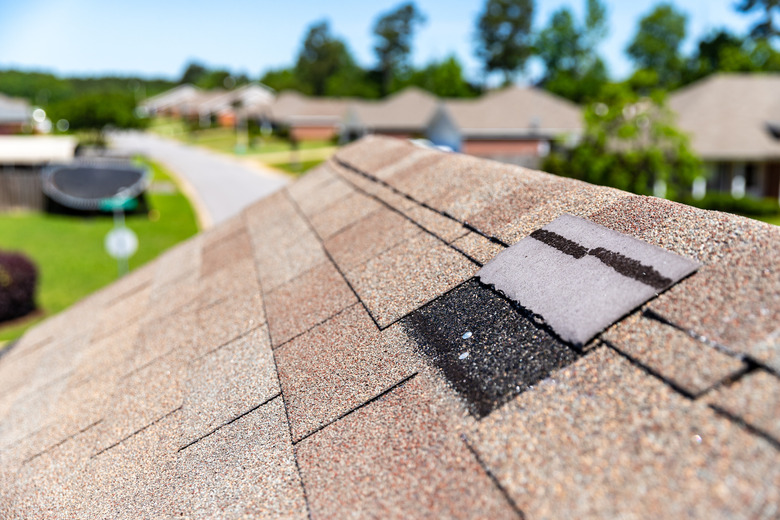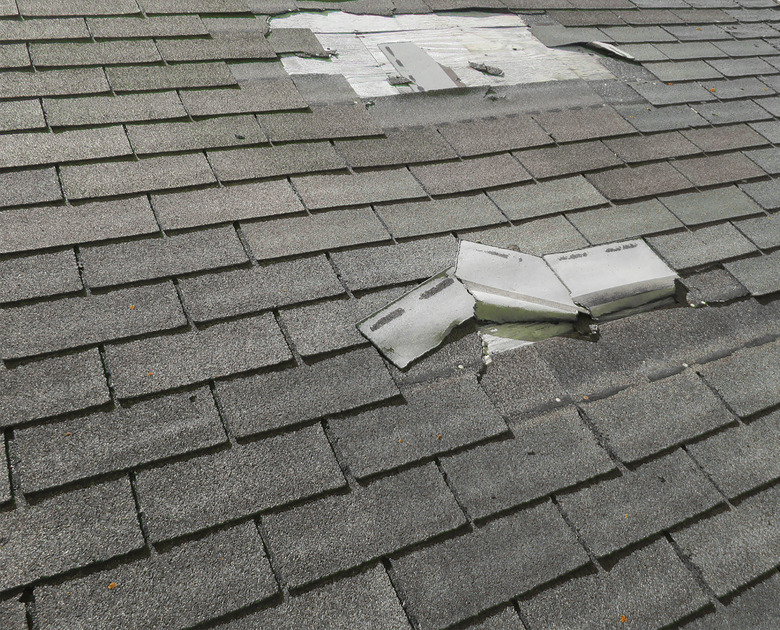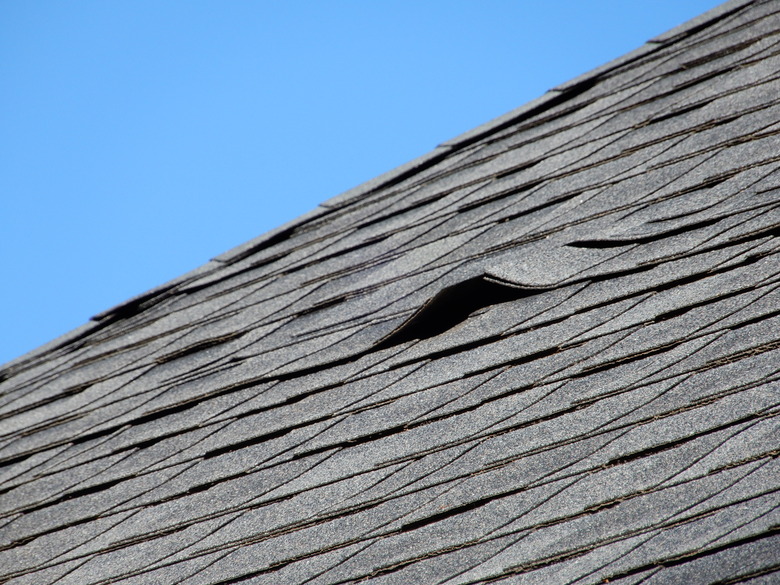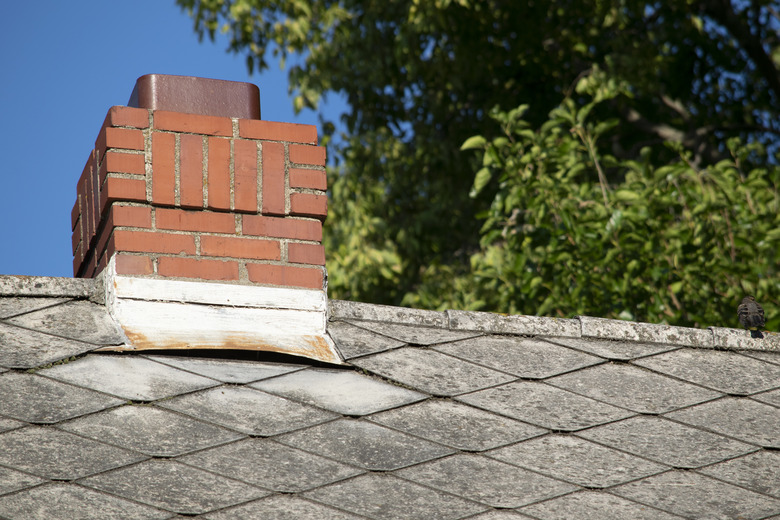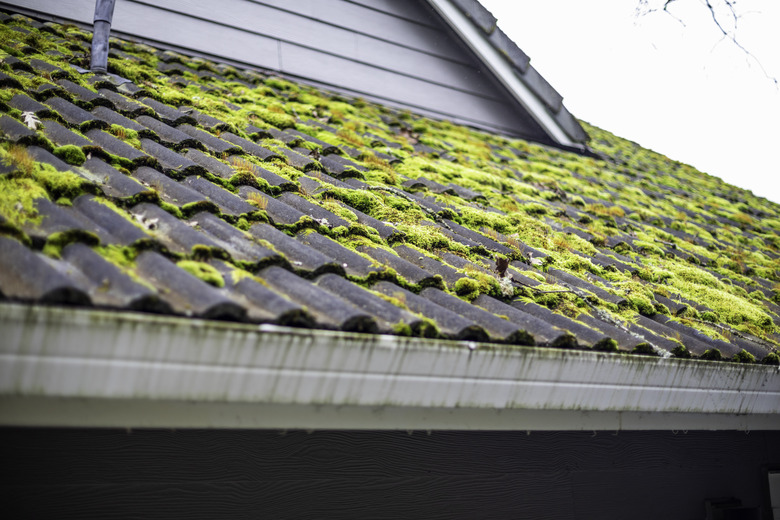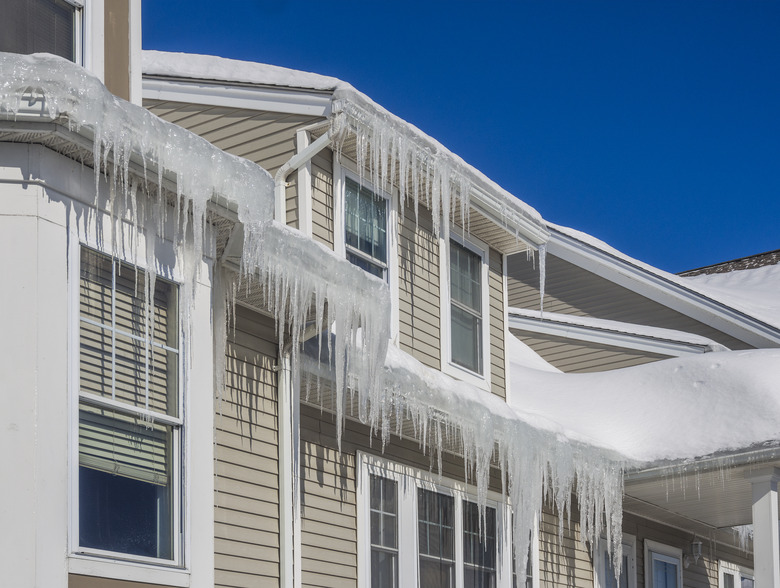5 Simple DIY Fixes For Common Roof Problems
A leaking roof can result in mold, mildew, and even structural damage to your home. Fortunately, many common roof problems can be prevented or fixed with just a little elbow grease. (And, yes, it is totally possible to fix things on the roof yourself, as long as you practice good roof safety protocol.) If your roof has missing shingles, moss, algae, damaged flashing, or ice dams in the winter, it's important to address these roof issues as soon as possible.
1. Repairing Asphalt Shingles
1. Repairing Asphalt Shingles
Loose, torn, and missing asphalt shingles can result from heavy winds, rubbing tree branches, pesky critters, and a variety of other issues. While a damaged or out-of-place shingle can quickly lead to roof leaks, this is fortunately a reasonably simple roof repair that most homeowners can handle. Before getting started, look at the problem area and examine all nearby shingles for punctures or tears. Any damaged or missing shingles should be removed and replaced, while loose shingles can just be reinstalled.
Use a flat pry bar to break the seal between shingles so you can access the nails. Slide the bar underneath a nail and then hit the end of the bar with a hammer until the nail comes out. After removing all loose or damaged shingles, remove any debris as well as any remaining caulk or roofing cement. Then, install new shingles with roofing nails. Cover each nail head with roofing caulk to protect it from rust and then place a bead of roof sealant under the edge of each new shingle and under the shingle above it.
2. Fixing Curled Shingles
2. Fixing Curled Shingles
Shingles that are curled up at the edges don't need to be removed. Instead, simply use a heat gun to make the shingle more malleable and then use roofing caulk to glue it back down again. Gently push on the shingle with your shoe (wear shoes you don't care about for this project) for a few seconds to help it stay down while the caulk starts to take hold.
3. Fixing Damaged Flashing
3. Fixing Damaged Flashing
Flashing is an important part of a roofing system since it helps channel water away from chimneys, skylights, siding, and the edges of eaves. When flashing fails, water flows where it's not supposed to go, causing leaks. Missing roof flashing should be replaced as soon as possible by a professional roofer because improperly installed flashing can cause serious damage to your home.
If your flashing is rusted or otherwise damaged, you can temporarily repair it by covering the damage with a thick layer of roof cement. It's important to ensure the surface of the sealant is as smooth as possible since large bumps in the sealant can stop water from draining properly. While this solution can help you avoid water damage for a season or two, you still need to call a roofing company sooner or later to have the flashing replaced because this measure is not a long-term solution.
While only a roofing contractor should install new flashing, if any joints between the flashing and shingles lack adequate sealant, you solve this problem by filling in the joints with roof cement or caulk. Similarly, if you notice any cracks in old sealant, apply a layer of roofing cement over the cracked area.
4. Stopping Algae and Moss
4. Stopping Algae and Moss
Both algae and moss can cause serious damage to roofs, and these two plants can grow on all types of roofing materials. Moss is a particularly bad problem for asphalt and wood roofs because the roots grow through the shingles, allowing water to enter the sheathing below. Moss can cause clogged gutters and damage to just about all types of roofs.
Algae is one of the most common roof problems for roofs in shady areas, but the good news is that while the black streaks might not be particularly attractive, algae doesn't present much of a threat to most roofing materials. If you have an asphalt roof, though, you should never ignore algae since it can damage the granules, causing UV damage that shortens the life span of the shingles.
The solution for these two roofing issues varies based on the roofing material and the severity of the problem. For wood or asphalt roofs, apply a solution of one part bleach and one part water, let the solution sit for 20 minutes and then rinse away the solution with a garden hose. You'll need to gently brush away dead moss with a soft broom, making downward motions, but algae will disappear as soon as it dies.
Avoid using harsh chemicals, like chlorine bleach, on any type of tile roof. Instead, use a mixture of 1 pound of oxygen bleach and 2 gallons of water. Never use a pressure washer to remove moss or algae on any roof or you may damage the shingles or tiles.
While it's possible to simply rub away moss that has just started to grow using a soft broom, extensive moss buildup typically requires multiple treatments and may even require a professional roof cleaner.
Future moss and algae growth can be prevented by installing copper- or zinc-coated sheet metal strips just under the top ridge of your roof. When you get a roof replacement in the future, you can request similar metal strips to be incorporated into the new design so your new roof will never be subjected to these problems again.
5. Stopping Ice Dams
5. Stopping Ice Dams
Improper insulation and/or ventilations can cause a common roof problem during freezing weather. That's because warm air trapped in the attic can cause a melt-freeze cycle along the roof edge, resulting in the development of thick ridges of solid ice known as ice dams. These ice dams can cause serious damage to a home, tearing off gutters, loosening shingles, and causing water leaks. Trying to chip the ice off the roof won't fix the problem, and it might damage your roof. You can temporarily stop a small leak by directing a fan at the water dripping into your attic since the cold air will freeze the water nearly instantly, but freezing a leak is obviously not a long-term solution.
For a long-term solution, you'll need to ensure the roof deck stays cool from the eave to the ridge. This means hiring a professional to install vents high up on the roof or along the ridge (for exhaust air) as well as intake vents along the soffit if not enough exist already. It also means improving the insulation in your attic. To do this, install an attic door cover to prevent heat from escaping through the door, add more insulation along the floor, and ensure any heating or ventilation ducts are properly sealed and insulated.
If you aren't able to perform all these long-term fixes before winter starts but you have a little time before the next storm hits, you can also attach a de-icing cable in a zigzag pattern along your roof, which will prevent ice buildup in the winter. This is still not as effective as improving the insulation in your home, though.
